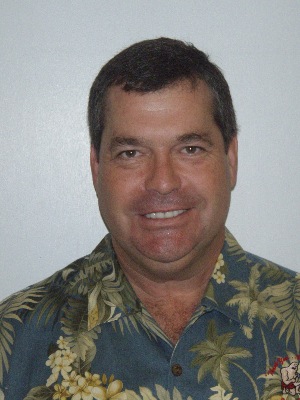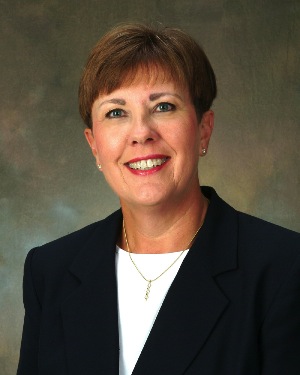he results.
Lucas: Working with Dave Crawford, now a director at Tire Pros, I ran more than 20 two-and-a-half-day business plan workshops for dealers.
Curry: I created the business plan for Curry’s Auto Service about 13 years ago. We have used it to help keep us on track and help us expand.
Sands: I developed the business plan necessary to attract investors and lenders for the acquisition of Lex Brodie’s in 2006.
What are the key components, in synopsis, of a typical plan?
Brown: It’s critical to have a financial budget that helps guide the plan. The budget should be monitored on a monthly basis to make sure goals are being met and corrective action is taken when the business isn’t hitting the plan. Too often, business owners look at their budget at the end of the year and it’s too late to make corrections in operating procedures. Look at the profit/loss statement and use it as a guide to formulate the plan. Determine the sales forecast by commodity (tires, labor, parts, fees) and then look at the targeted gross profit in those same categories. Project payroll expenses and other costs such as advertising, insurance and operations. Then calculate the net profit.
Hennelly: Diane and I do our goals every year. We write down our one-year, three-year and five-year goals, both personal and professional. It’s amazing how much you can achieve if you just stay focused. “Goals you set are goals you get” is an intra-company slogan of ours.
Curry: What product or service are you providing and how does that fill a need?
What separates a standard plan from a great one?
Potter: By standard, I assume you’re referring to one that’s useless and was a waste of time to write. Any plan not based in reality, that does not define specific projects to improve the company, that does not become ingrained in the daily lives of the owners and their employees, will have been a waste of time. A great plan succeeds in all three responsibilities and produces a great company.

Brown: A great one measures res-ults and takes corrective action to get operations back on track before it’s too late.
Lucas: It really comes down to having clear target markets, expanding capabilities in delivering value to these drivers, and an action plan that always has 10-15 items in play that are visible, the completion of which are each recognized and celebrated. Developing a superior business plan takes time. It also takes input from your team. This should not be you coming down from the mountain with tablets. Your team should see it as “our” plan. This will help to gain commitment, and it will be a “smarter” plan with input from people who are out there on the floor. It should also not focus on just one big thing. The key to success is having 10 or 20 little things that often don’t require green matter – money – but grey matter – putting everyone’s thinking caps on.
Sands: A great plan is realistic and will contain several projection scenarios.
Curry: A great one is thought-through, thorough and complete.
How can a tire dealer keep his or her plan realistic while striving for greatness?
Lucas: Here the emphasis is on the action plan. Very often, dealers will say they will do all 15 things in the next three weeks. This is not realistic. The action plan should have short-term, medium-term and longer-term activities.
Brown: Joining a group of like-sized businesses and always comparing operations and results really helps to keep dealers on plan. A 20 group is a great help in this area, where non-competing dealers become mentors and offer suggestions, as well as examples of plans and ideas.
Hennelly: Set your sights just a little out-of-reach. Keep your entire company or team focused on your plan. Discuss as a company what you can do to get better and always strive for perfection. When faced with setbacks – and they are going to happen, even to the best – learn from them and discuss plans to get back on track. Remember, you cannot do it alone. You must always be obsessed with finding, training and developing the best people. Your rewards can only come through others’ successes and growth, as well as your own.
Potter: Keep it simple and combine advice from employees and outside advisers with knowledge from your own experience.
Sands: A dealer must know the market, its strengths, its weaknesses, its opportunities and its vulnerabilities. Continual, sustainable improvement in all areas is essential for greatness.
Is there anything inherently different about a tire dealer’s plan than that of any other businessman or woman?
 Lucas: The structure should be the same. A challenge for tire dealers comes in inventory. With so many SKUs out there, without a target market they are always simultaneously under- or over-inventoried. They tie up their capital and this limits their ability to invest in creating capabilities.
Lucas: The structure should be the same. A challenge for tire dealers comes in inventory. With so many SKUs out there, without a target market they are always simultaneously under- or over-inventoried. They tie up their capital and this limits their ability to invest in creating capabilities.
Brown: Any independent operation faces the same challenges.
Potter: Only the words are different.
Where can dealers go for assistance in developing a realistic plan?
Lucas: That is a tough one. When we were running workshops, many people told us we were their only resource. Local business schools can help, but the lead time is long.
Hennelly: I’m sure that there are great business plans available. Yet I have always thought that you need to pull the company leaders together and discuss what sacrifices will be made to achieve the goal. Set the course, be realistic and stay focused. It will be very hard work.
Curry: Community colleges, bankers, accountants.
Potter: Their state associations, program groups, 20 groups, management consultants, the SBA, SCORE.
Brown: Again, by joining a 20 group, a dealer can ask for examples from colleagues of business plans that work in the real world.
How can dealers conduct a regular tune-up on their plan?
Brown: Dealers should have the discipline to look at their financials each month or quarter and then see what is falling short – or, better yet, achieving greater-than-expected results.
Sands: Constantly measure results versus the plan. Prepare annual detailed financial and operational budgets in which company management participates.
Potter: Re-check reality in a formal review with employees once a year. Call up the plan anytime before introducing new projects not listed and see if they fit.
Hennelly: Hold monthly profit-and-loss reviews with managers and district managers, and review where you are versus your plan or budget.
Lucas: We had some dealers come back to our workshops as many as four times. They saw it as their annual time to focus on their business. Action plans should be reviewed weekly, but the total plan should be revised on at least an annual basis, or immediately when significant changes take place, like when a new, large competitor enters the marketplace. This will require several hours of individual time in preparation, one-on-one and group brainstorming with employees, and then several hours in isolation to incorporate the input.

What elements of business plans do banks and lenders look at more than others?
Lucas: Cash is king. Loans are repaid out of cash flow. They want to see a budget of money coming in, money going out and money left over.
Hennelly: Is it realistic? Are you increasing comparable store sales year over year? If you fall short, have you reduced your expenses to ensure they’re the same or close to plan profits? Are you in control of your growth?
Sands: Financial results, particularly cash flow; debt levels; leverage ratios.
Potter: Is there one? Is it thoughtful and realistic? Is there progress? What does the budget say?
Besides finding funding, what can a business plan do?
Lucas: Drive success. As part of this, it can help owners focus their own investment of time and money. It also can be an effective recruiting tool to attract top talent.
Potter: More important than finding funding, the plan is the key to communicating the direction of the business between management and employees, and often serves as a needed reminder to management to focus, focus, focus.
Hennelly: It can ensure that you’re on track – and adjusting when you’re not. If sales are soft, the leader must make the tough calls with regard to expenses.
Sands: It can educate all employees on where the company wants and expects to go. It keeps everyone on the same page.
Brown: Determine growth potential, set realistic profitability targets and set sufficient staffing levels.
Curry: It can aid in marketing and public relations, keep the business on task and serve as an outline for the company handbook.
How has a tougher economy affected the creation and use of business plans for tire dealers and other small businesses?
Brown: I believe it has enhanced the need for a business plan. The days when dealers could shoot from the hip and make money are long gone in this business. The dealer who has a professional plan for profitability and growth will be a survivor in the tire world.
Hennelly: It has forced us all to adjust expenses in line with our gross profits. We have been forced to do more with less. We slowed our growth two years ago and made very tough concessions, yet now we are growing faster than ever – and it’s the best time to grow as everything is on sale. The recession has made us better business people.

Potter: It should have encouraged more to be written and rewritten.
Sands: Without an excellent business plan, it’s now virtually impossible to raise capital.
Lucas: Plans are now more important than ever before. The consequences of missing opportunities or not responding to threats come faster and they are often fatal. Unfor-tunately, dealers can become so focused on short-term survival that they simply try to cut their way to profitability. This never works. The key is to invest your way to profitability. And this is best done based on the blueprint of a business plan.













